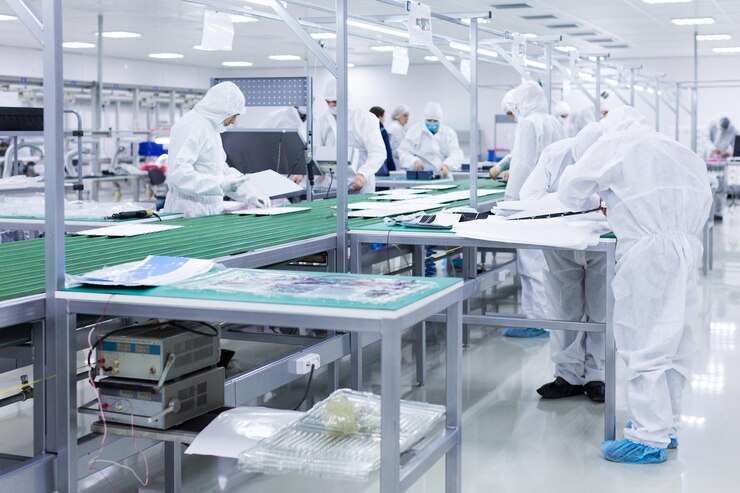Cleanroom tables are indispensable components in controlled environments like laboratories, pharmaceutical manufacturing facilities, electronics assembly plants, and biotechnology research centers. These specialized tables play a crucial role in maintaining the pristine conditions required for sensitive processes and experiments. In this comprehensive guide, provided by Global Lab Supply, we will explore the significance of cleanroom tables, their types, key features, and tips for selecting the right one for your specific needs.
The Significance of Cleanroom Tables
Cleanroom tables are designed to meet stringent cleanliness and contamination control standards, making them essential for various industries:
Pharmaceuticals: In pharmaceutical manufacturing, cleanroom tables are used for drug formulation, aseptic filling, and packaging to prevent contamination and ensure product quality.
Electronics: Cleanroom tables are vital in electronics assembly, protecting sensitive components from dust and static, which can damage delicate circuitry.
Biotechnology: Laboratories conducting cutting-edge research in biotechnology require cleanroom tables to safeguard experiments involving cells, DNA, and proteins from external contaminants.
Semiconductor Manufacturing: In the semiconductor industry, cleanroom tables maintain the purity required for producing microchips and other electronic components.
Medical Device Manufacturing: Cleanroom tables are used to assemble medical devices, ensuring they meet stringent regulatory standards for cleanliness and sterility.
Types of Cleanroom Tables
Cleanroom tables come in various types, each tailored to specific industry needs. Here are some common types:
Stainless Steel Cleanroom Tables: These tables are highly corrosion-resistant, easy to clean, and suitable for applications where cleanliness and durability are paramount.
Laminar Flow Cleanroom Tables: Designed with integrated laminar flow hoods, these tables provide a continuous supply of ultra-clean air to protect sensitive processes and materials from contaminants.
Adjustable Height Cleanroom Tables: Ideal for ergonomic flexibility, these tables allow users to customize the table’s height to their preference, reducing strain during extended work periods.
Static-Control Cleanroom Tables: Essential for electronics manufacturing, these tables dissipate static electricity, preventing electrostatic discharge (ESD) that can damage sensitive components.
Chemical-Resistant Cleanroom Tables: These tables are designed to withstand exposure to harsh chemicals, making them suitable for chemical laboratories.
Key Features of Cleanroom Tables
When choosing a cleanroom table, several key features should be considered to ensure it meets the specific requirements of your application:
Material: Select a table constructed from materials appropriate for your cleanroom class and industry. Stainless steel, epoxy resin, and laminated particleboard are common choices.
Smooth Surfaces: Cleanroom tables should have smooth, easy-to-clean surfaces to minimize the risk of particle generation and facilitate cleaning.
Sealed Edges: Tables with sealed edges prevent the accumulation of contaminants in crevices, maintaining a cleaner work surface.
Compatibility with Cleanroom Garments: Ensure the table’s design allows for easy integration with cleanroom garments, such as gowns and gloves, to maintain aseptic conditions.
Ergonomics: Adjustable height tables support user comfort and ergonomics, reducing the risk of repetitive strain injuries.
Static Control: For electronics manufacturing or cleanrooms with sensitive equipment, choose tables with built-in static control measures to prevent ESD.
Mobility: Consider whether you need a stationary or mobile table, depending on your workflow and space requirements.
Tips for Selecting the Right Cleanroom Table
Selecting the right cleanroom table is crucial to maintaining a contamination-free environment. Here are some tips to guide your decision:
Assess Your Cleanroom Classification: Understand your cleanroom’s classification (ISO Class 1-9) and select a table that meets or exceeds the cleanliness requirements.
Consider the Application: Choose a table that aligns with the specific tasks and processes carried out in your cleanroom. For example, if you handle chemicals, opt for chemical-resistant materials.
Evaluate Ergonomics: Prioritize user comfort and ergonomics, especially for tasks that require extended periods of work. Adjustable height tables can be a valuable investment.
Anticipate Future Needs: Consider scalability and future expansion. Your cleanroom table should accommodate changing requirements and technologies.
Static Control Measures: If you work with sensitive electronics, prioritize static control features to prevent damage from electrostatic discharge.
Budget Considerations: While quality is essential, balance your budget constraints with the need for a reliable and durable cleanroom table.
Supplier Reputation: Choose a reputable supplier like Global Lab Supply, known for providing high-quality cleanroom furniture and equipment.
Conclusion
Cleanroom tables are indispensable assets for industries requiring controlled environments to ensure product quality, research integrity, and regulatory compliance. Choosing the right cleanroom table tailored to your specific needs is vital for maintaining the cleanliness and sterility required for your operations. By considering factors such as material, design, and functionality, you can make an informed decision that enhances the effectiveness of your cleanroom while ensuring the success of your processes and experiments. Global Lab Supply is your trusted partner in providing top-quality cleanroom tables and equipment, ensuring you have the tools necessary to excel in your industry.


